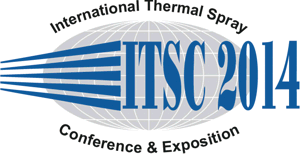
|
3707 |
|
Wednesday, May 21, 2014, Hall H1 & H2 4:01 PM "Young Professionals" |
|
Cold spraying of amorphous Cu50Zr50 alloys |
|
Alexander List* / Helmut Schmidt University of the Federal Armed Forces, Germany Takeru Mori/ National Institute for Materials Science, Japan Frank Gärtner/ Helmut Schmidt University, University of the Federal Armed Forces Hamburg, Germany Seiji Kuroda/ National Institute for Materials Science, Japan Thomas Klassen/ Helmut Schmidt University, University of the Federal Armed Forces Hamburg, Germany |
|
A new range of applications in cold spraying is expected for bulk metallic glass (BMG) coatings. In contrast to multi component BMGs, simple binary amorphous alloys can be produced at lower costs, but require higher quench rates for retaining an amorphous structures. Using such feedstock, cold spraying appears as a promising route to process amorphous coatings or parts. The present study focuses on cold spraying of an amorphous Cu50Zr50 alloy by using nitrogen as process gas. The existing scientific models to predict coating formation in cold spraying, like the calculation of the window of deposition or of the coating quality parameter · need to be modified to account for the unique softening behavior of glassy alloys. By a systematic variation of the spray parameter sets, the critical velocities for coating formation were determined experimentally. The experimental data were used to tune the existing models for bonding to cold spraying of amorphous Cu50Zr50 powder. The results were verified by cold spraying of coatings with thickness of about 200 µm. X-ray diffraction proved that the metastable amorphous structure of the Cu50Zr50 powders is retained in the cold sprayed coatings. In summary, cold spraying of Cu50Zr50 metallic glass powders proves as suitable method to process less costly amorphous coatings or parts. |